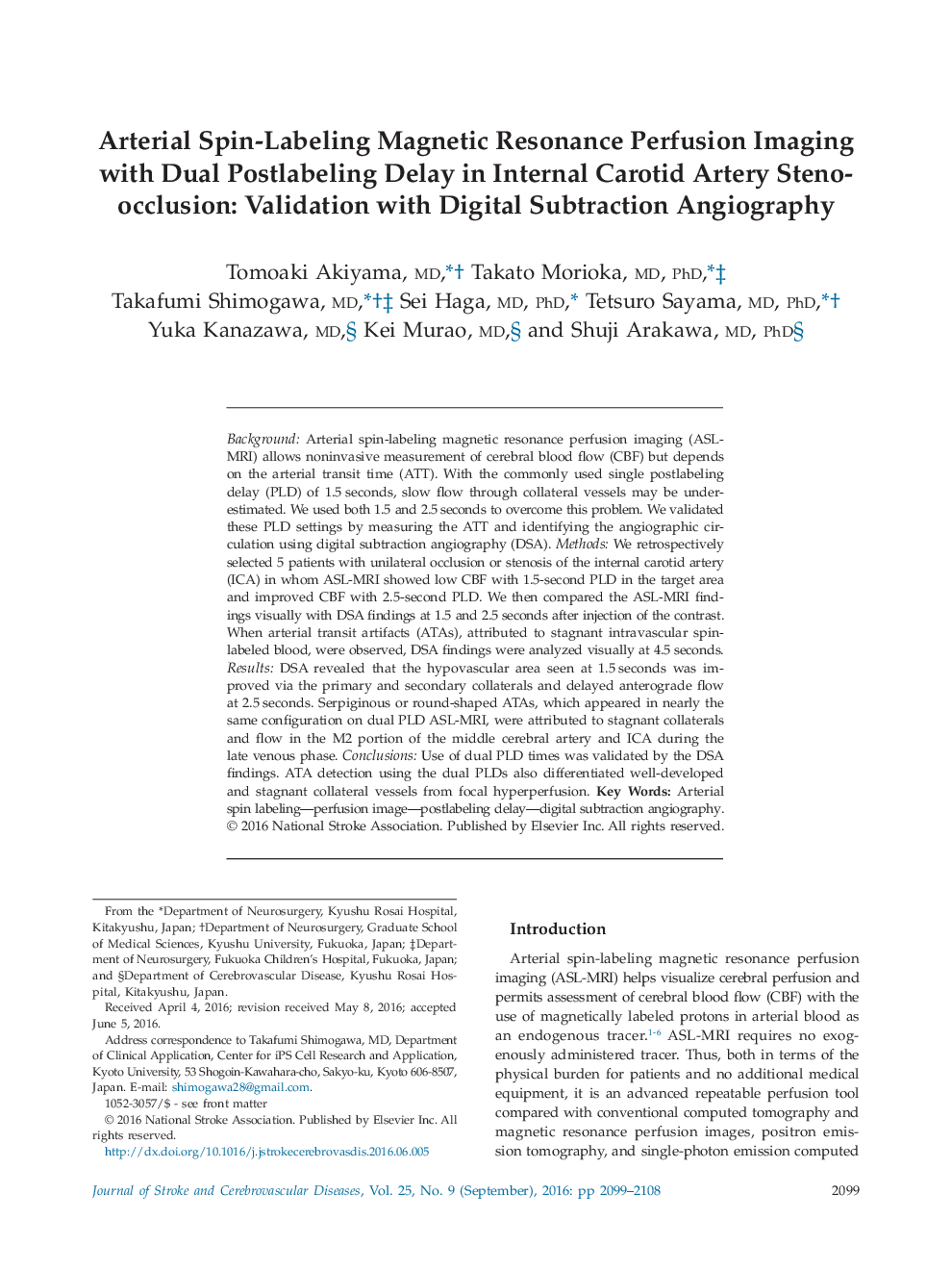| Article ID | Journal | Published Year | Pages | File Type |
|---|---|---|---|---|
| 2703657 | Journal of Stroke and Cerebrovascular Diseases | 2016 | 10 Pages |
BackgroundArterial spin-labeling magnetic resonance perfusion imaging (ASL-MRI) allows noninvasive measurement of cerebral blood flow (CBF) but depends on the arterial transit time (ATT). With the commonly used single postlabeling delay (PLD) of 1.5 seconds, slow flow through collateral vessels may be underestimated. We used both 1.5 and 2.5 seconds to overcome this problem. We validated these PLD settings by measuring the ATT and identifying the angiographic circulation using digital subtraction angiography (DSA).MethodsWe retrospectively selected 5 patients with unilateral occlusion or stenosis of the internal carotid artery (ICA) in whom ASL-MRI showed low CBF with 1.5-second PLD in the target area and improved CBF with 2.5-second PLD. We then compared the ASL-MRI findings visually with DSA findings at 1.5 and 2.5 seconds after injection of the contrast. When arterial transit artifacts (ATAs), attributed to stagnant intravascular spin-labeled blood, were observed, DSA findings were analyzed visually at 4.5 seconds.ResultsDSA revealed that the hypovascular area seen at 1.5 seconds was improved via the primary and secondary collaterals and delayed anterograde flow at 2.5 seconds. Serpiginous or round-shaped ATAs, which appeared in nearly the same configuration on dual PLD ASL-MRI, were attributed to stagnant collaterals and flow in the M2 portion of the middle cerebral artery and ICA during the late venous phase.ConclusionsUse of dual PLD times was validated by the DSA findings. ATA detection using the dual PLDs also differentiated well-developed and stagnant collateral vessels from focal hyperperfusion.
